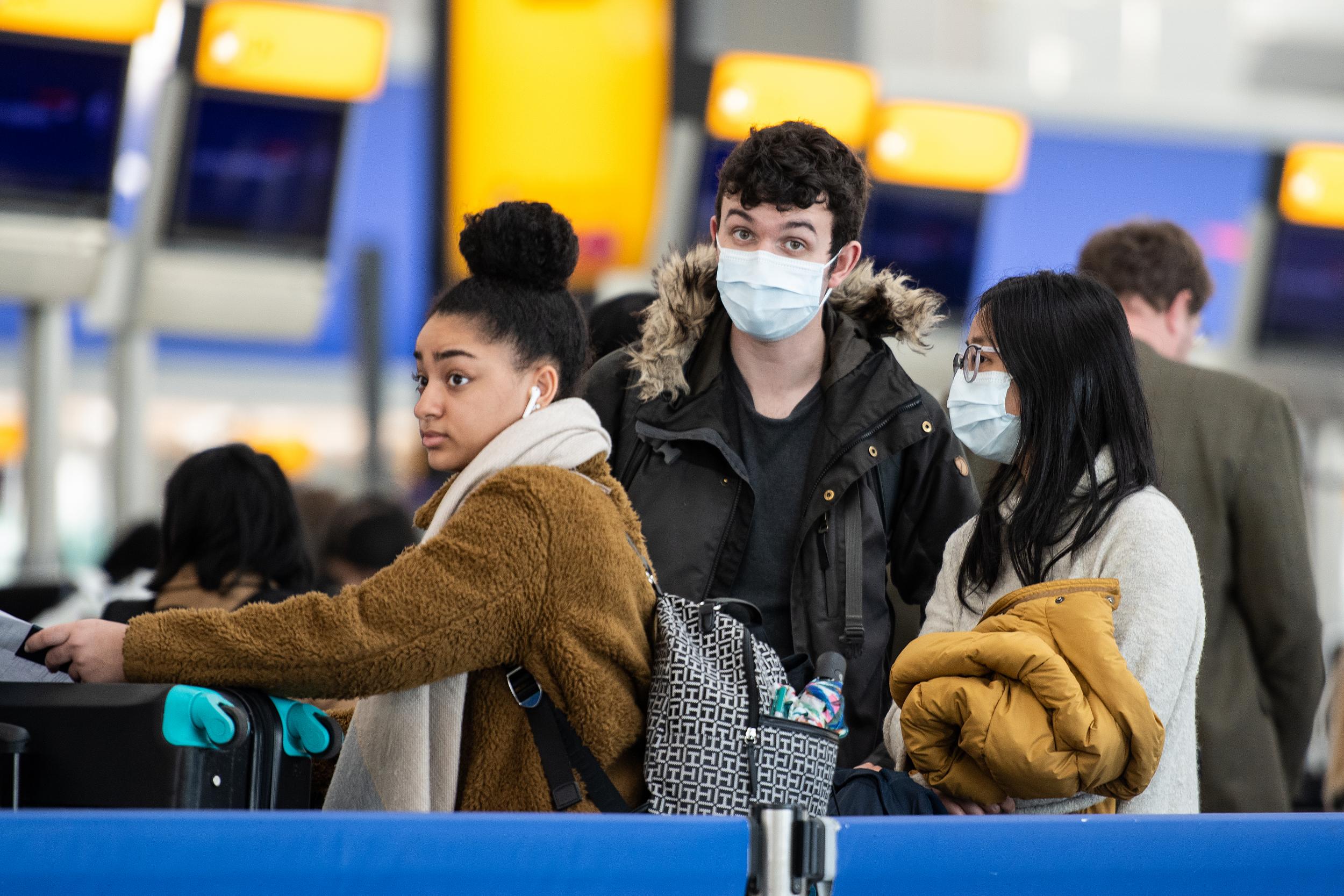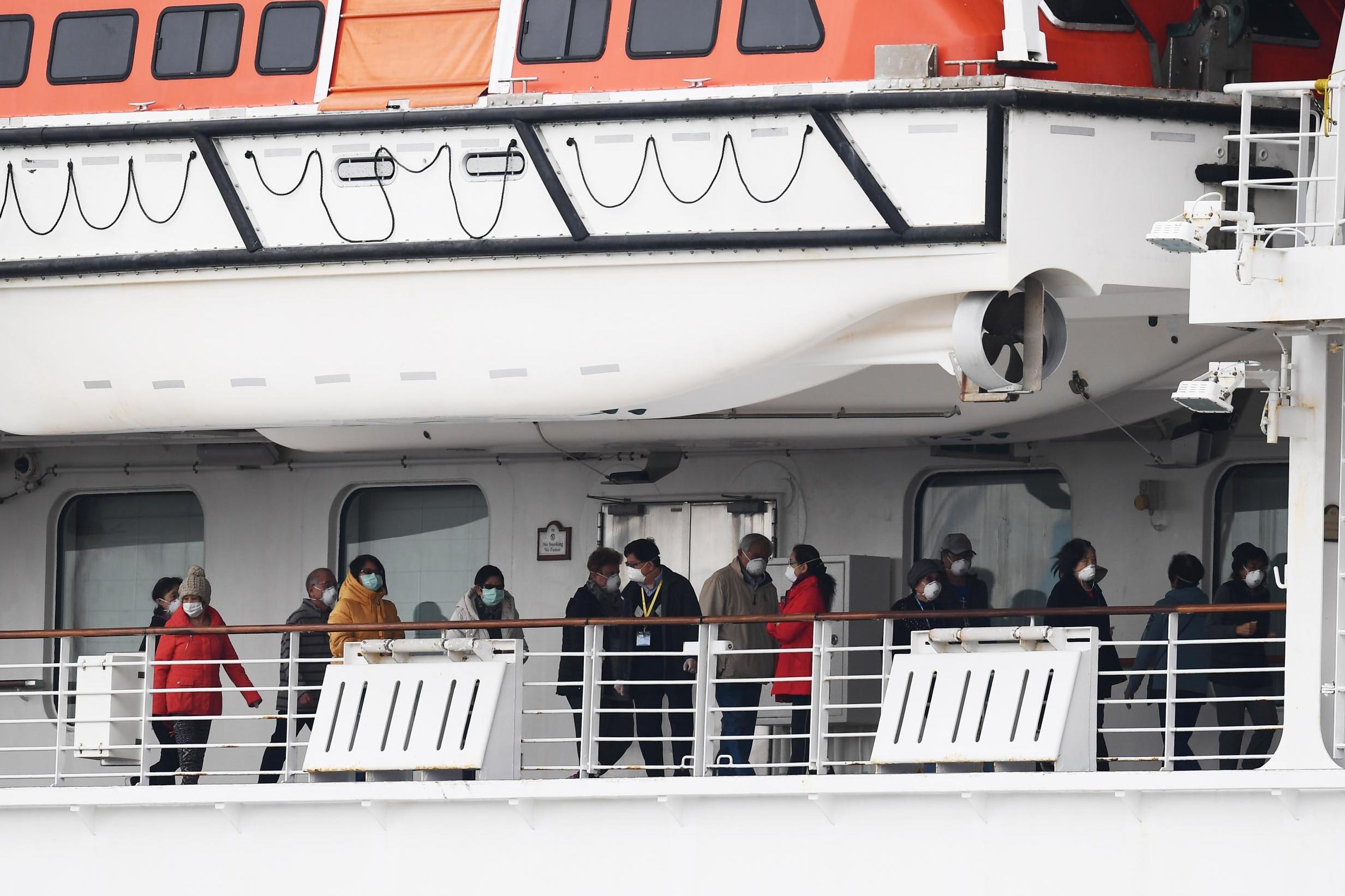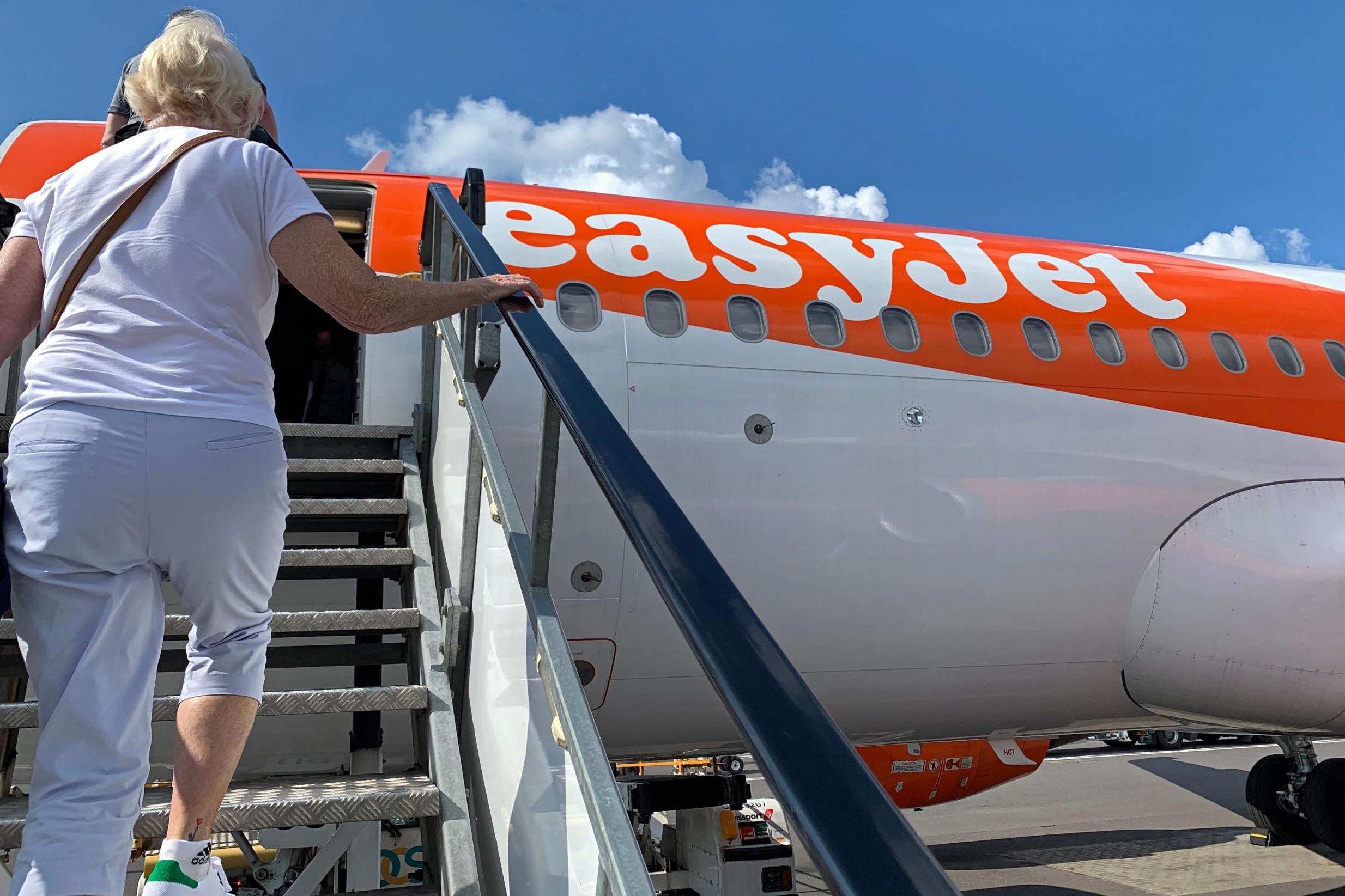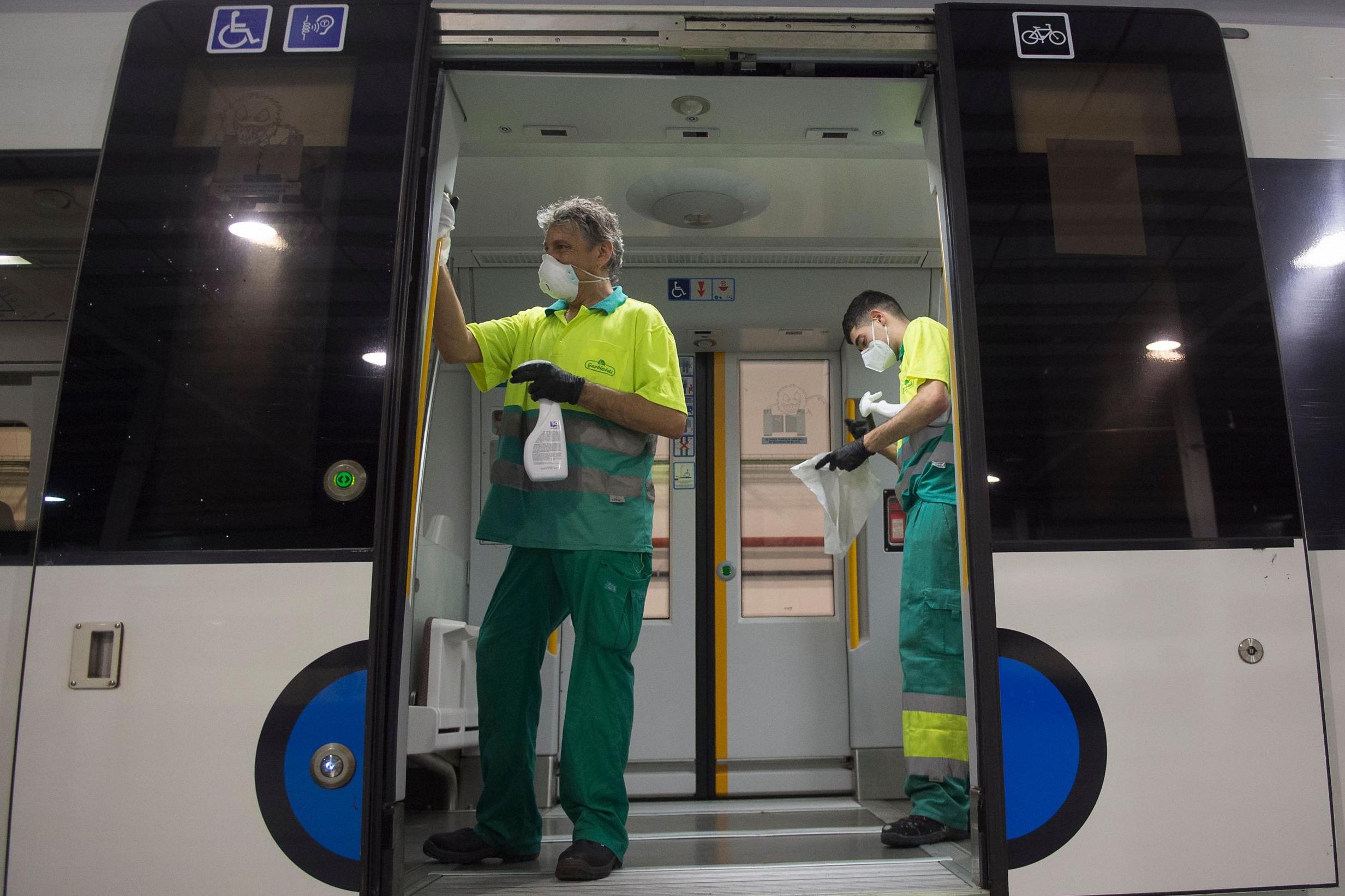The Independent's journalism is supported by our readers. When you purchase through links on our site, we may earn commission.
Coronavirus: How safe is it to travel by plane, train or cruise liner?
International travel has resumed, but just how safe is it?

Your support helps us to tell the story
From reproductive rights to climate change to Big Tech, The Independent is on the ground when the story is developing. Whether it's investigating the financials of Elon Musk's pro-Trump PAC or producing our latest documentary, 'The A Word', which shines a light on the American women fighting for reproductive rights, we know how important it is to parse out the facts from the messaging.
At such a critical moment in US history, we need reporters on the ground. Your donation allows us to keep sending journalists to speak to both sides of the story.
The Independent is trusted by Americans across the entire political spectrum. And unlike many other quality news outlets, we choose not to lock Americans out of our reporting and analysis with paywalls. We believe quality journalism should be available to everyone, paid for by those who can afford it.
Your support makes all the difference.With lockdown restrictions lifted throughout the UK, and the resumption of international travel on 17 May, many British travellers are tentatively considering the prospect of foreign holidays.
We’ve looked at the risks involved in travel by train, plane and cruise liner – and the measures introduced by the industry to try and mitigate them.
Cruises

International cruise travel from the UK restarted in August following a blanket ban on cruising abroad from the Foreign, Commonwealth and Development Office (FCDO) that remained in place for 17 months.
Domestic cruises sailing around the UK became possible again from 17 May.
Industry body Cruise Lines International Association (CLIA) has pledged that all passengers and crew will be tested before boarding.
And other operators, such as Virgin Voyages and Norwegian Cruise Line, are requiring all passengers to be double jabbed before embarking.
To support the safe restart of international cruise travel, the government and cruise industry signed a Memorandum of Understanding (MOU) to help the industry build back from Covid-19 while protecting British nationals from future pandemic-related disruption.
Major operators, such as Carnival Corporation (which includes P&O Cruises), Royal Caribbean Group and Norwegian Cruise Line Holdings, have all resumed services.
Despite this, FCDO guidance for travellers embarking upon a cruise is cautionary, advising passengers to take out sufficient insurance before travel: “Although operators have taken steps to improve infection control, cruise ships continue to experience COVID-19 outbreaks, affecting passengers and seafarers. The confined setting on board and combination of multiple households enables COVID-19 to spread faster than it is able to elsewhere.
“Cruises with confirmed or suspected COVID-19 cases have previously been denied permission to dock or to disembark passengers. This can have serious implications for passengers and seafarers on board. You should check the protocols of the cruise operator to ensure you are comfortable with safety measures.”
Cruise ships may be unique in that the main liners are required to have at least one doctor and two nurses onboard, with medical staff on call 24/7, but these small cities on water are arguably a major breeding ground for disease. Cruise liners house a large number of people from around the world in a relatively small space, making viruses easy to spread.
Every year, there are cases of Norovirus on cruise ships, with the CDC reporting eight outbreaks on seven different ships in 2019. Industry figures suggest that around four per cent of passengers will contract the illness – one in 25 – when there is an outbreak on board.
Enhanced onboard cleaning and pre-boarding screening are expected, but making these spaces safe again is likely to be major challenge for the industry.
However, the boss of one of the world’s biggest cruise liners declared in August that cruise ships are “literally one of the safest places on earth”.
CEO of Royal Caribbean, Michael Bayley, said that on average, only one or two travellers in each sailing of 1,000 people are testing positive for the virus on a weekly basis.
In a lengthy Facebook post, the company’s CEO, Michael Bayley, said that infections were cropping up despite the line’s requirement that passengers aged two and above must present a negative Covid test before boarding.
“How is that possible? Testing captures status at a point of time, and if the guest is incubating infection, then the test will miss it,” he said.
“Do we have Covid positive guests onboard? Yes! How many guests are positive? Typically one or two of a thousand plus guests a week per ship.”
Air travel

International air travel resumed in the UK on 17 May, with airlines gradually restarting operations under a new traffic-light system that categorises countries based on their infection rate and perceived risk.
From social distancing and wearing masks at the airport, to limited food on aircraft, measures aimed at minimising the spread of coronavirus are now commonplace.
Most airlines will require you to wear a mask onboard when not eating or drinking, and will provide hand sanitiser.
In England, Scotland and Wales passengers must wear a face covering onboard the aircraft; in Northern Ireland the measure is “recommended”. (Some airlines are very specific about which types of masks they deem acceptable - check the rules before you fly.)
If you’re flying short-haul, going to the toilet just before boarding could help eliminate the need to go while on the aircraft, meaning less movement around the cabin and less chance of coming into contact with a coronavirus carrier.
This may seem like hair splitting, but studies have shown that those who move a lot around the cabin are more likely to pick up a bug.
In a 2018 study tracking the “behaviours, movements and transmission of droplet-mediated respiratory diseases during transcontinental airline flights”, a research team led by Atlanta’s Emory University found that those in window seats had far fewer encounters with other passengers than people in other seats.
This is due in large part to the fact that those by the window were less likely to get up from their seat, with just 43 per cent moving around the aircraft compared to 80 per cent of people in aisle seats – meaning they were less likely to come into contact with potential virus carriers.
David Nabarro, WHO special envoy for Covid-19, previously said that air travel is “relatively safe” when it comes to the spread of coronavirus.
“The one good thing about aeroplanes is that the ventilation system includes really powerful filters which means that in our view they are relatively safer,” he told BBC News.
“Given the excellent ventilation system on modern commercial aircraft and that the main method of transmission [of respiratory infections] is by direct contact and/or airborne droplet, most risk is isolated to those passengers sitting in the same row or that behind or in front of someone sick,” Dr David E Farnie, medical director of Global Response Centre for MedAire Worldwide, told The Independent.
The International Air Transport Association (IATA), which has done extensive research on the topic of air transport and communicable diseases, backs up the assertion that people onboard an aircraft are no more likely to fall ill than anyone in a confined space.
Its fact sheet on Public Health Emergency Preparedness highlighted the importance of modern air filters on planes, which “have a similar performance” to those used to keep the air clean in hospital operating rooms and industrial clean rooms.
“Hepa (high-efficiency particulate air) filters are effective at capturing greater than 99.9 per cent of the airborne microbes in the filtered air.”
The modern cabin air system delivers around 50 per cent fresh air and 50 per cent filtered, recirculated air.
“Air supply is essentially sterile and particle-free,” says IATA. Research published by IATA in October 2020 suggested that catching coronavirus on a flight was less likely than being struck by lighting.
Trains

Health officials recommend wearing a face mask in all confined spaces to minimise the chance of catching Covid, including trains. Despite all methods of transport investing in scrupulous disinfectant and cleaning programmes, Covid-19 is an airborne disease meaning a face mask offers the best protection.
Almost all train providers in the UK are advising passengers to continue wearing face masks while on board to protect staff and other passengers, although it is no longer illegal not to do so in England (masks remain mandatory on public transport in Wales, Scotland and Northern Ireland).
Like buses, the infection risk on trains is largely dependent on how crowded they are and how much distance can be kept between other people. Ventilation also plays a role, so being able to open windows can be advantageous.
Research undertaken by Dr Lara Goscé at the Institute of Health in 2018 suggested a link between commuting on the London Underground – a notoriously busy network – and an enhanced risk of catching respiratory illnesses. While this study focused specifically on the London Underground, the results demonstrate “the existence of a correlation between the use of public transport and infectious disease transmission.”
“Transmission of infectious diseases is directly correlated to the number of contacts between individuals,” Dr Goscé told The Independent. “The more contacts, the higher the chance of contagion.
“With public transport, we usually refer to confined and particularly crowded environments (such as stations, train carriages, buses etc.) where close contact between infected and healthy individuals is probable because of the high density of passengers, and also the possibility of touching potentially contaminated objects such as handles and seats,” she said.
“If buses and trains are crowded, then commuters will be less than two metres away from a greater number of people and thus the risks of transmission increase,” Dr Michael Head, senior research fellow in global health at the University of Southampton, told The Independent.
Dr Head emphasised the importance of washing hands thoroughly before and after using public transport, while Dr Goscé encouraged passengers to avoid high peak hours and try to make trips involving only one means of transport (i.e. not changing lines or services).
“Also, as recommended by the WHO, everyone should practice good respiratory hygiene, i.e. sneezing and coughing into a flexed elbow and immediately discarding used tissues into a closed bin,” she added.
This article was amended on 29 September 2021 to make clear that it remained a legal requirement to wear masks on trains in Scotland, Wales and Northern Ireland. The article originally said that that it was no longer a legal requirement to wear masks on trains in the UK, which was incorrect.



Join our commenting forum
Join thought-provoking conversations, follow other Independent readers and see their replies
Comments